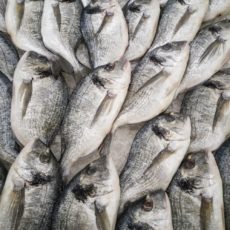With an anticipated 10 billion people expected to inhabit the planet by 2050, the demand for animal protein will increase by 52 percent making sustainable and healthy approaches to feeding the world more critical than ever before.
Read moreaquaculture
Largest Threat to Agriculture in Developing Countries: Natural Disasters

Natural disasters, such as hurricanes, earthquakes, tornadoes, droughts, and floods severely damage essential agricultural assets. As a result, food security and cycles, livelihood means, trade flows, and economic growth are all disrupted. Most of the countries impacted
Read moreSustainability and Restoration

Hey, swrmers! Welcome back to the Hive! In our recent video on Sustainable Seafood, we talked about aquaculture projects having the potential to rebuild marine ecosystems and promote biodiversity. One such project taking place in New York Harbor is Billion Oyster Project, whose ambitious goal is to restore one billion live oysters to New York Harbor by 2035. We recently spoke with Danielle Bissett, the Assistant Director of Restoration at Billion Oyster, to learn more.
Read moreSustainable Seafood

Global seafood consumption has more than doubled in the last 50 years, with demand reaching a staggering 143 million metric tonnes. And with an anticipated 10 billion people expected to inhabit the planet by 2050, the demand for animal protein will increase by 52 percent, making sustainable and healthy approaches to feeding the world more critical than ever before.
So today, we’re going to talk more about one of the most nutritious and sustainable proteins available on the planet — if sourced responsibly.
Read moreSustainable Fish with Giovanna Kupiec of Seamore’s

Today we’re talking with Giovanna Kupiec, Sustainability and Marketing Manager of Seamore’s Restaurants in New York City. While as much as 2 billion pounds of fish is discarded by fisheries in the United States every year, Seamore’s is dedicated to tackling seafood waste while sourcing their ingredients sustainably, diversely, and as locally as possible.
Read more
